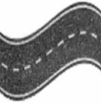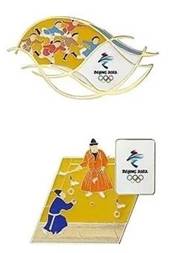One day we could build houses out of old diapers. A team of scientists gathered recycled diapers. The team mixed the diapers into sand and cement (水泥). Then the team made a little house. The scientists found that recycled diapers could take the place of a lot of the building materials. In May, the scientists reported these findings in a scientific magazine.
Using old diapers would mean less rubbish. It could also make homes cheaper. Siswanti Zuraida is an environmental engineer. He and his team find solutions to environmental problems that affect the health and safety of people and the environment. Building materials are often expensive and harmful to our health. Scientists have tried to save costs with unusual materials. Diapers are made from trees, cotton and plastic. Most parts of diapers could all be nice building materials.
Zuraida and his team washed, dried and cut up the diapers. They made six different kinds of building materials. Each used different percent of diapers, cement, sand, rocks and water. They put them in a machine to test their load-bearing (承重) ability. They found out how much diaper waste they could use. Too much made the building materials weak. Next, the scientists built a small home. It had two bedrooms and one bathroom. Diapers could make up 27 percent of the materials in the home's load-bearing structures (结构),parts of a building that help hold a lot of weight. Some parts of homes do not have to hold a lot of weight. There, diapers could be very helpful. They could make up a lot of the building materials. But tall buildings need more support. They would have less diaper materials in load-bearing structures.
Diapers cannot be used in real homes yet. Countries have laws about what can be used for building. Cement, bricks and wood are allowed. But making them creates a lot of greenhouse air, such as CO2. Plus, picking out diapers from other waste and cleaning them would take a lot of work. Diapers' plant-based parts can be used for building. But scientists have to separate and then throw away their plastic parts. This can be hard to do.
 B .
B .  C .
C .  D .
D . 
Do you find yourself studying the same page for 15 minutes? Are you thinking of a TV show while doing your homework? If so, you may have a concentration problem.
Concentration is the ability to focus on a task at hand. Luckily, concentration can be improved through training. Start by creating a space that's well lit, quiet, and comfortable. Take away your smartphone, TV or something like that. Instead, have everything you need at your desk. This area is your concentration zone, and you should use it only for working. After a while, your brain will automatically switch to concentration mode as soon as you sit down.
Physical health also plays a part in concentration. Healthy food, enough sleep, and regular exercise help your mind stay sharp. When stress gets in the way, try meditation(冥想). It will help you relax and practice concentration.
American communication and creativity expert Sam Horn provides more tips for improving your "FOCUS".
F=Five More Rule. When you think you can't work anymore, just do five more minutes.
O=One "Think" at a Time. Stop dealing with lots of things at the same time in your head. Instead, set a time for thinking about a single task.
C=Conquer Procrastination(克服拖延症). Sometimes we don't feel like concentrating, so we put off work. Just ask yourself, "Will it get easier later?" Then you'll probably want to get it over with.
U=Use Your Hands as Blinkers. Cup your hands and only pay attention to what you are reading.
S=See As If for the First Time. Look at each moment like it is the first or last time you'll see or experience it.
Concentration can help you get ahead in life. Use the tips and find out for yourself!
When you hear the word "home," you probably think of the place you are living in right now. Maybe it is an apartment, a single house, or a two-story house. Maybe it is made of wood or stone. You may think houses are rather normal buildings, but some houses around the world are rather unique!
The Bedouin (居无定所的阿拉伯游牧民族)people of the Middle East and North Africa live in interesting homes. The Bedouin people live in the desert, and they move around without staying to live in one place very long. So, they live in tents that are made of animal hair. The tents are easy to put up and take down when they move from place to place. In a similar way, a group of Mongolian people of the Gobi Desert also live in tents rather than buildings. These homes called "ger" homes, are also made of animal hair, but they are round instead of square like Bedouin tents.
Before people made the first tents, they lived in caves(洞穴). Some people in the southern part of Spain live in caves today, too! They call these cave homes "cuebas". These caves keep the house cool during the summer and warm during the winter.
Another type of home is the "igloo" used by the Inuit people of Canada and Greenland. Igloos are normally made of ice and snow. The igloo protects the people from the wind as well as keeps them warm. In fact, the temperature inside an igloo can even reach 16℃ just from body heat alone.
The Bagabao people of the Philippines used to live in what may be a childhood dream for some—a treehouse! These treehouses were built so that the people could watch for enemies and protect themselves from wild and dangerous animals. In addition, the people could stay cool in their treehouses during the hot summer season. Although. the Bagabao people don't live in these treehouses any more, they still use things like them for resting and for meeting people
If you ever get the chance, be sure to check out different homes of different cultures!
 B .
B .  C .
C .  D .
D . 

Beijing 2022Winter Olympics souvenirs(纪念品) have drawn much attention from collectors around the world, especially the beautiful pins(胸针). They have won high praise for the excellent patterns.
The Beijing Winter Olympics pins connect traditional Chinese culture with modern beauty. It's thought that the style of the countdown souvenir pin collection is really special and romantic. As for the 200-day countdown pin, the pattern features sakura(樱花) on the front and a snowflake on the back, showing how the Beijing 2022Winter Olympics follows the Tokyo 2020Summer Olympics.
If collectors get all pins in the countdown series, they can piece them together in the shape of a big "0", which means the countdown is over and that the Winter Olympics is going to kick off.
Some limited pins about ancient Chinese stories quickly sold out. The series has put Chinese fairy tales into the pattern, vividly showing the images of Pangu separating the sky from the earth, Jingwei filling up the sea, Chang'e fying to the moon, etc. Only 2,022 sets of the series were produced.
Other pin include traditional games, for example, the ancient Chinese ball game, cuju. Ice play, an old sport in North China, is also shown on a single pin. The ancient style of the pattern can be found in ancient paintings of the Ming and Qing dynasties.
As the host of the 2022 Winter Olympic Games, Beijing has told its own stories to the world through these colourful pins, created to welcome athletes and audience around the world.
China and western countries may have different cultural beliefs about certain animals, but when it comes to pigs, we have somehow reached an agreement - that pigs are ugly, lazy, stupid and shameless.
Just look at the idioms and phrases in our languages. In Chinese, we have the expressions of "Boiling a dead pig", and "A pig looking in the mirror is still a pig". And in English, there are expressions such as "eating like a pig" and "sweating like a pig". None of them are exactly complimentary.
But the truth is that pigs do have some fine qualities(品质). And there's probably no better time to clear their names than now, for it is the Year of the Pig on Chinese Spring Festival, which falls on Feb. 5 this year.
It is true that science long ago proved that pigs aren't stupid at all. According to a paper published in 2017 in the International Journal of Comparative Psychology, pigs are mentally and socially similar to dogs and chimpanzees(黑猩猩). They like to play. They have good long-lasting
memories. And they know the differences between those who treat them well and those who don't.
There are lovable pig characters in cartoons too. Peppa Pig, for example, a UK animated television series that began in 2004, has now become one of the most popular cartoons in 180 countries. The four members in the cartoon's pig family teach children from all around the world about love, friendship, and the value of family. And in China, the adventures of McDull, a piglet who works hard towards his dreams even though he keeps failing, have been made into films since 2001.
"People are putting too much emphasis on efficiency and immediate results, but McDull is slow and patient, and not afraid of repeated failures," said McDull's creator Brian Tse when she was promoting the 2009 film McDull, Kung Fu Ding Ding Dong in Beijing. "He has a heart of gold."
Perhaps these are the qualities of pigs to keep in mind when we celebrate this Chinese New Year—their intelligence, cuteness, patience and innocence(纯真).
①It is a USA animated television series that began in 2004.
②It has now become one of the most popular cartoons in 180 countries.
③Children can learn about love, friendship, and the value of family by watching the cartoon
Peppa Pig.